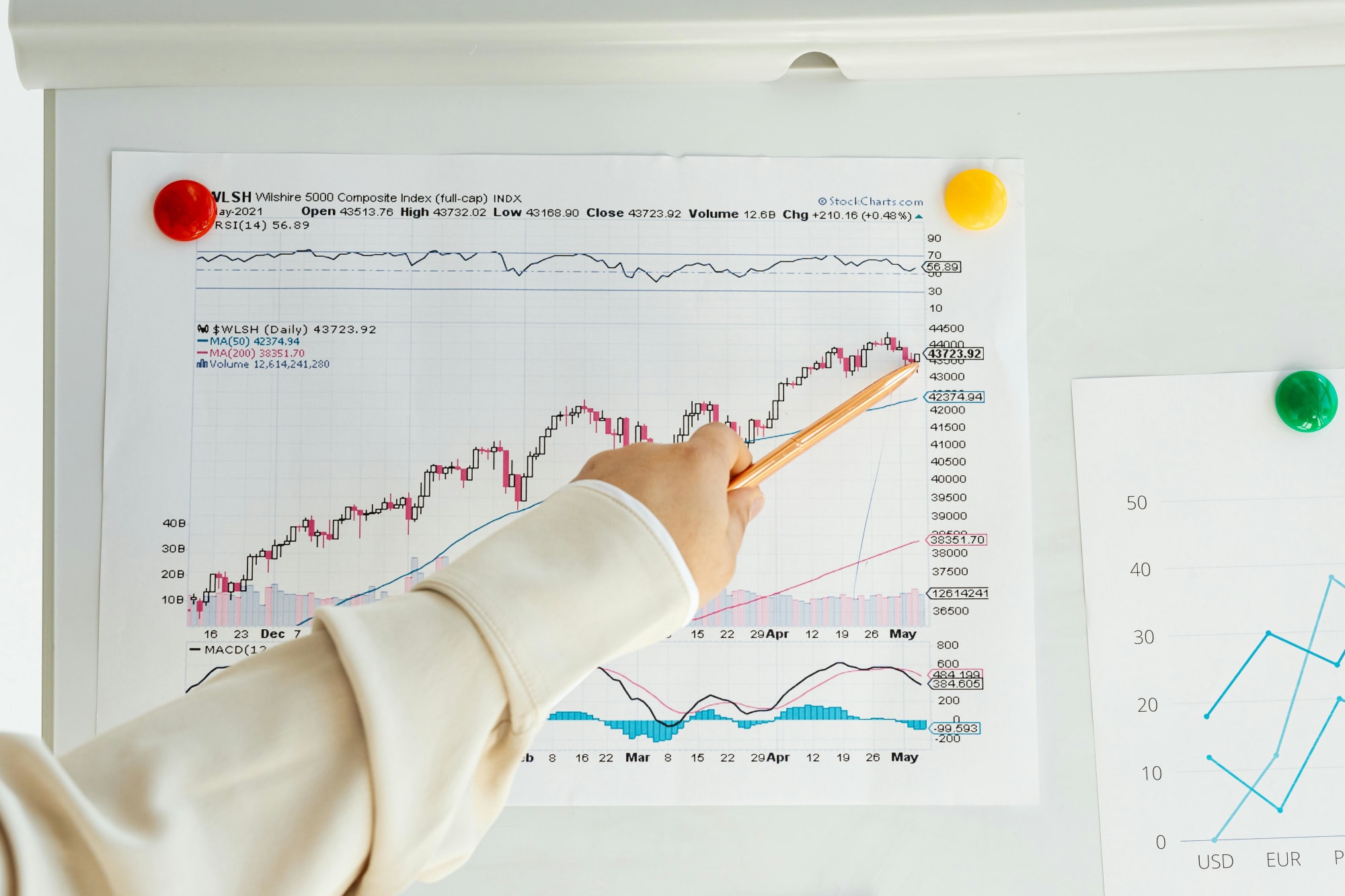Invest
Is the government treating women as a political problem?
Following on from the recent cabinet reshuffle that Prime Minister Scott Morrison was pushed to implement as a result of disturbing allegations of sexual misconduct in Parliament, the government has once again pledged its allegiance to women by promising billions to advance women’s safety and health initiatives. But is the government approaching women as a political problem?
Is the government treating women as a political problem?
Following on from the recent cabinet reshuffle that Prime Minister Scott Morrison was pushed to implement as a result of disturbing allegations of sexual misconduct in Parliament, the government has once again pledged its allegiance to women by promising billions to advance women’s safety and health initiatives. But is the government approaching women as a political problem?

“For Australia to succeed, Australian women need the freedom and opportunities to make genuine choices,” the opening line of the government’s Women’s Budget Statement reads.
By choices, the government means ensuring women are able to make their own decisions, especially when it comes to their careers and future while being safe from violence and the threat of violence.
As such, on Tuesday evening, 11 May, Treasurer Josh Frydenberg pledged a total of $3.4 billion to help get mothers back into work, to protect those fleeing domestic violence and to improve women’s health and wellbeing.
These budget measures include $1.9 billion earmarked for economic security, $1.1 billion for women’s safety, $1.7 billion to improve the affordability of childcare and $351.6 million for women’s health and wellbeing measures.

“Our approach to developing this Women’s Budget Statement has been informed by our values of respect, dignity, choice, equality of opportunity and justice – these are fundamental to the safety and economic security of women in Australia,” Prime Minister Morrison said.
But critics are not impressed.
Calling the government’s offering to women as a “swing and a miss”, the Australian Institute criticised the government for treating issues affecting women as a political problem rather than a systemic policy problem.
“Take for example the average of $250 million per year dedicated to domestic violence services which drops by 99 per cent to $2.3 million in 2025-26. Or the $148 million (but really only $32.9 million of new money) over five years to women’s health issues like endometriosis, breast and ovarian cancer, which will fall to $4.2 million in 2025-26.
“Domestic violence and female health issues will not disappear in four years, and critical services for women require the certainty of permanent government support,” Eliza Littleton, research economist at the Australian Institute, said.
Arguing that the budget does not address the gender inequity stemming from superannuation tax concessions, Ms Littleton went a step further, pointing out that tax concession on super contributions cost the government 60 times the budget investment in ‘women’s policies’, or $41 billion a year and 72 per cent of the benefits go to men.
“If the government wanted to show that it was listening to women, then maybe they could have implemented policies women have been advocating for and not these half-baked temporary policy gestures,” Ms Littleton concluded.
The government’s perceived peace offering also failed to impress women’s movement Financy.
In fact, in a blog published on Thursday, Financy said that women have to take their futures into their own hands.
“If we consider three areas which were acknowledged in the budget with a certain level of funding and support, and we shift our own mindsets on achieving gender financial equality at a personal level, then we might find ourselves closing the gap a lot sooner,” Financy wrote.
Among a number of things that form Financy’s plan to overstep the government and aid women in achieving financial equity, the movement encouraged women who take a career break, be it to have children or for life matters, to keep contributing to their super.
“So, while we can wait on governments to embrace a bigger strategy on helping women achieve financial equality and greater independence, but what’s really critical is having the personal tenacity to take action, never give up and lead your own mindset on gender equality,” the team said.
With a federal election due in months, it remains to be seen whether women are just another political obstacle for the government.
Opposition leader Anthony Albanese certainly thinks so. In his budget reply speech on Thursday evening, Mr Albanese said the budget spending was "very much focused on political management of problems the government itself has created over the last 8 years."
"Aged care cuts, childcare fee increases, ignoring of women’s safety and economic security issues," he noted.
But besides pledging equality for women, Labor's speech was underwhelming, with the Opposition hinging its sell on crisis and transitional housing for women.
So the question remains is Labor too politicising women?
About the author

About the author


Economy
RBA's hawkish stance reflects inflation concerns, State Street economist comments
In a recent statement, the Reserve Bank of Australia (RBA) has signaled a hawkish stance on interest rates, drawing insights from financial experts about the implications for Australia's economic ...Read more

Economy
Navigating the inflation maze: How CFOs can outsmart economic hurdles in Australia
Fresh inflation data have cooled expectations of near-term rate cuts in Australia, intensifying pressure on margins, capital allocation and demand. Rather than wait for monetary relief that may not ...Read more

Economy
Inflation concerns rise as Australia's CPI climbs to 3.8% in October
Australia's latest Consumer Price Index (CPI) figures have sent ripples through the economy, with headline inflation accelerating to 3.8% year-on-year in October, up from 3.6% in September. The data, ...Read more

Economy
October CPI results pose challenges for RBA’s monetary policy stance
In a surprising turn of events, the October Consumer Price Index (CPI) data has raised eyebrows among economists and market strategists, revealing stronger-than-expected inflationary pressures in ...Read more

Economy
Global deal activity declines by 6% amid economic uncertainty, reports GlobalData
In a year characterised by economic turbulence and evolving market conditions, global deal activity has witnessed a notable downturn during the first ten months of 2025. According to GlobalData, a ...Read more

Economy
Australia’s softening labour market puts another RBA cut in play — here’s what business should do now
A four-year high in unemployment has revived expectations the Reserve Bank could deliver another rate cut as soon as November. With quarterly GDP growth running at 0.6 per cent and annual growth at ...Read more

Economy
Rising CPI reinforces RBA’s stance as rate cut expectations remain: State Street
State Street Global Advisors says the Reserve Bank of Australia (RBA) is likely to hold its current policy outlook following the release of September quarter inflation data, which showed an unexpected ...Read more

Economy
NSW SES boosts tsunami preparedness ahead of World Tsunami Awareness Day
As World Tsunami Awareness Day approaches on 5 November, the New South Wales State Emergency Service (NSW SES) is ramping up efforts to enhance tsunami preparedness along the east coastRead more

Economy
RBA's hawkish stance reflects inflation concerns, State Street economist comments
In a recent statement, the Reserve Bank of Australia (RBA) has signaled a hawkish stance on interest rates, drawing insights from financial experts about the implications for Australia's economic ...Read more

Economy
Navigating the inflation maze: How CFOs can outsmart economic hurdles in Australia
Fresh inflation data have cooled expectations of near-term rate cuts in Australia, intensifying pressure on margins, capital allocation and demand. Rather than wait for monetary relief that may not ...Read more

Economy
Inflation concerns rise as Australia's CPI climbs to 3.8% in October
Australia's latest Consumer Price Index (CPI) figures have sent ripples through the economy, with headline inflation accelerating to 3.8% year-on-year in October, up from 3.6% in September. The data, ...Read more

Economy
October CPI results pose challenges for RBA’s monetary policy stance
In a surprising turn of events, the October Consumer Price Index (CPI) data has raised eyebrows among economists and market strategists, revealing stronger-than-expected inflationary pressures in ...Read more

Economy
Global deal activity declines by 6% amid economic uncertainty, reports GlobalData
In a year characterised by economic turbulence and evolving market conditions, global deal activity has witnessed a notable downturn during the first ten months of 2025. According to GlobalData, a ...Read more

Economy
Australia’s softening labour market puts another RBA cut in play — here’s what business should do now
A four-year high in unemployment has revived expectations the Reserve Bank could deliver another rate cut as soon as November. With quarterly GDP growth running at 0.6 per cent and annual growth at ...Read more

Economy
Rising CPI reinforces RBA’s stance as rate cut expectations remain: State Street
State Street Global Advisors says the Reserve Bank of Australia (RBA) is likely to hold its current policy outlook following the release of September quarter inflation data, which showed an unexpected ...Read more

Economy
NSW SES boosts tsunami preparedness ahead of World Tsunami Awareness Day
As World Tsunami Awareness Day approaches on 5 November, the New South Wales State Emergency Service (NSW SES) is ramping up efforts to enhance tsunami preparedness along the east coastRead more








